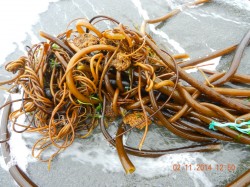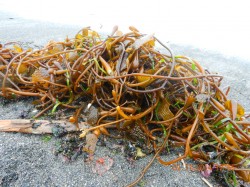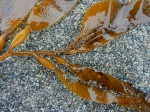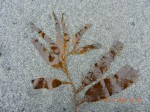This morning’s walk on the beach showed a different pattern of macroalgal drift on the shore.
East winds of the last two weeks have torn up most of the immediately offshore red and brown algae and have produced drifts of biomass on the beach.
The local organic farmers have had a good stretch of seaweed gathering as a result.
Today however, there were rolls of both Macrocystis pyrifera (Giant Kelp) and Nereocystis leutkeana. (our common Bull kelp.)
The Macrocystis prefers growing in water of higher salinity than we have inside the Salish sea, so it supposedly arrives here by coming down the Strait from the West Coast and then ending up on our beaches. I have seen it growing off Bamfield and it certainly grows down as far as California and was harvested experimentally for Biogas extraction.
Reference From Biotechnology for Biofuels: “Macroalgae as a source of bioenergy first received intensive scrutiny as part of the US Ocean Food and Energy Farm project as proposed by Wilcox [10], initiated in 1973 and lasting over a decade [11]. It resulted in the construction of ocean farms for cultivation of the giant kelp Macrocystis[12]; reviewed by Kelly and Dworjanyn, [13]. While farming this species of seaweed in this truly offshore environment presented many technical challenges, the biogasification of macroalgal biomass gave excellent results [10,12,14,15]. This and subsequent research highlights some of the major advantages of macroalgae over other sources of biofuels (see Table 1).”
- Macrocystis pyrifera
- Macrocystis pyrifera apical (growing ) end
The more usual macroalgae that we get on Taylor Beach is Nereocystis leutkeana. In the 1980’s there was research done on the volumes of biomass that could be derived for energy extraction from kelp around Vancouver Island, but since kelp beds are such a valuable habitat and fish nursery, fortunately those plans have been put on hold.
The small floats. or Pneumatocysts of macroalgae often become detached and turn up on the beach . Here is a comparison of pneumatocysts of three Brown algae species.
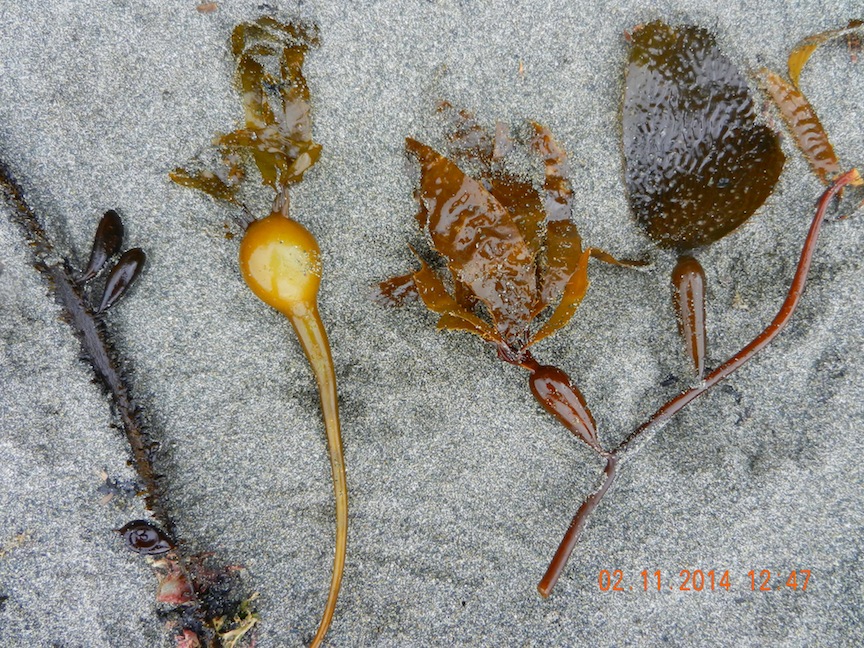
Pneumatocysts of egregia menziesii on the left, Nereocytis leutkeana in the middle and two floats of Macrocystis pyrifera on the right.
The arrival of these macroalgae on the beach starts the process of decomposition which is really the first time that the energy fixed by these rapidly growing macroalgae, with very high rates of productivity, is passed on in the food web.


